Writers and Artists Self Publishing in the Digital Age.

Writers and Artists Self-Publishing in the Digital Age
Keen to keep up with the latest developments in the world of self publishing The Producer and I attended the Writers and Artists Self Publishing in the Digital Age conference held on Saturday 29th November at The Welcome Trust, London.

The Welcome Trust, Euston London
Registration was at 9.30 am -10 am followed by a brief introduction to self publishing by Dr Alison Baverstock.
Roz Morris, author, editor, writing tutor and book doctor, with over twenty years experience in publishing kicked off the days events with an invaluable presentation on editing for self publishers.
The first big editing mistake that new writers make was to mix up the order of the three fundamental stages of the editing process. Developmental editing or structural editing which focuses on story, character, genre, structure, writing style and completeness should always come first. Followed by Copy editing which looks for consistency of details, plot holes, factual details and time line. Lastly is proofreading which is a final tidy up of the manuscript e.g spelling and grammar. Roz said you are literally throwing your money down the drain if you pay for your manuscript to be proof read before you have carried out a development edit.
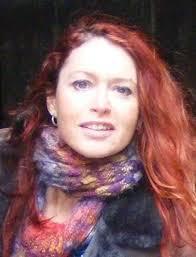
Roz Morris on Editing for Self-Publishers
Roz recommended the lists in the Writers and Artists Yearbook and the Society of Editors and Proofreader’s as places to look for reputable editors. She stressed the importance of finding an editor with experience of editing the genre you are writing in. There is no good working with a popular editor who specialised in women fiction if you are writing fantasy.
It is important not to rush the editing process and to schedule time for writing after the developmental stage of editing is complete. There is no point setting a date for publication at this stage as there will be months of writing work still to do once you have received feedback from your chosen editor. Roz said try to remember that the editing process is a collaboration between the you the author and the editor to make your book the best it can possibly be.
It is possible for new writers to save money on the editing process by asking friends or relatives to do the copy editing and proofreading stages for them. However Roz recommended that the developmental stage of editing should always be done by a professional editor and is worth investing in. Always remember to edit your first draft yourself before giving it to anyone to edit.
Roz’s top tip for editing was to always check the structure of your book – the sequence of plot events. If you reorder these events in the correct way it can make a drastic difference to how gripping your book is. One way to check the structure of your book is to create what Roz calls a beat sheet. You take a sheet of A4 or a spreadsheet and go through the entire book, listing the purpose of each scene in a couple of words. It builds an X-ray of the book, and often shows you problems you couldn’t possibly see with all the prose in the way. It can also be used as a route map to restructure the novel without getting in a muddle.
You can follow Roz @ rozmorris.wordpress.com
Twitter@Roz_Morris
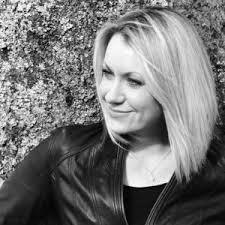
Jane-Dixon-Smith on Importance of Cover Design
Jane Dixon-Smith of Trickle Books spoke on the importance of cover design in self publishing. It is an area where new self-published writers often fall down because they are unwilling or unsure of whether to invest time and money, when it can be one of the easiest aspects to get right.
Covers are consumer facing and are the first aspect seen alongside many other books to entice people to ‘look inside’ on online retailers. Much more than a simple hook, they tell the reader the genre, the age range, and more specifically they can say if you like such and such an author then you’ll like this.
Jane stressed that good cover design is not about how much money you spend on it or whether you’ve had a popular designer work on it. There are many elements which make a cover work: images, colour, fonts, typography, composition, market, etc…
Formatting is an area new self published writers rarely think about. Many books have stunning covers but the typesetting is poor. This affects the ease of reading, the impression of professionalism and quality and in many cases increases the cost of the physical production of a paperback.
Powerpoint slides and a full summary of Jane Dixon-Smith’s talk is available at http://www.jdsmith-design.co.uk/writers and artists.
Other speakers of the morning included Jon Fine on how to self publish via Amazon Createspace, Kindle Direct Publishing and Audiobook Creation Exchange. If you are interested in any of these services you can find out more at kdp.amazon.co.uk, createspace.co.uk and acx.com.
The morning ended with Jeremy Thompson MD of Troubadour Publishing speaking on self publishing companies and marketing and what you should really expect. To find out more about Matador, Troubador’s self publishing imprint go to http://www.troubador.co.uk.
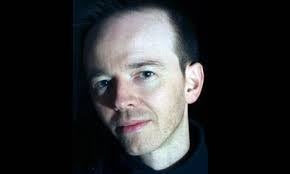
Thriller Author Mark Edwards
The most useful part of the conference was the afternoon session offering hints and tips from self-publishing authors.
Thriller author Mark Edwards kicked off with his presentation on marketing and promotion:the authors perspective. Mark has hit the top spot on Amazon.co.uk twice as a self-published author and has been traditionally published, published via his agent and by Amazon publishing.
Mark spoke about the importance of understanding the hook of your book when it comes to marketing and promotion. What is your book really about? It is important to be able to describe this hook in one sentence for pitching to agents and publishers. For example the hook of John Green’s bestseller The Fault In Our Stars would be teens with cancer go on a journey of self discovery.
You should also know your genre inside out. What’s hot? How are other e.g fantasy authors marketing their books? Go to bookshops, do your research. The blurb on the back of your book must be compelling and the opening chapter must grab a reader’s attention.
Mark promoted his thriller novels by targeting the top twenty self-published authors and asking them to guest blog on his blog so that they would reblog the same post on theirs. It was one way of getting his own books into their bought bars.
He spoke about how social media is a fantastic way to build your author platform and promote your work. Including an author email in his ebooks helped him to build an email list. One way to build a life long loyalty in your readers is to always respond to individual emails. Readers love to hear from authors and are always surprised when they get a response. Mark even begins each writing day by responding to emails from his readers.
Competitions have been a great way for Mark to promote his work. For example he offered readers the chance to name a character in his second book to get more people posting on his blog.
One of the biggest positives of self-publishing is it gives authors who for whatever reason haven’t been able to get a deal with a publisher the chance to find readers. The kindle chart is almost a level playing field where your book can nestle alongside the latest from Michael Connelly and John Green. In Mark’s opinion there has never been a better time to be an author.
Follow Mark at http://www.vossandedwards.com
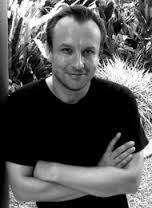
Best Selling Self-Published Author Nick Spalding
Best selling self-published author Nick Spalding offered advice for authors on all stages of the self-publishing process. Nick spoke about the importance of being yourself as a writer and picking a genre that suits you as a person and a writer. He said he writes comedy because he is incapable of writing anything serious.
Nick advises all new writers to read Stephen King’s On Writing which is full of invaluable tips for people starting out on the writing journey. He also emphasised the importance of having a social media presence via a blog, twitter and Facebook. When you have followers you can invite those people to write reviews for you to market your books.
Nick also advises new writers not to rush the self-publishing process and to put 100% into ensuring their book is a high quality product. Always respect your reader and remember it is your reputation as a writer that is on the line. Even though Nick has a traditional publishing deal now, he still chooses to self-publish because it is how he got started and it’s not something he’s ashamed of.
New writers must also toughen up when it comes to bad reviews. You have to remember the old cliché ‘one man’s meat is another man’s poison,’ and you are never going to please everyone all of the time. It’s what you get on average that counts.
One of the best pieces of advice Nick was given when starting out was to remember not to take the whole writing process too seriously. He also said it is important to get regular exercise as writing is such a sedentary job and to maintain a good social circle otherwise you will just stay indoors all day and become really weird.
Follow Nick at http://www.nickspalding.com
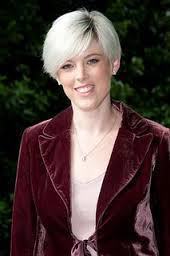
Bestselling Self Published Author Tali Roland
The conference ended with Darren Hardy of Amazon interviewing author Talli Roland on the self-publishing process.
Talli has sold a quarter of a million self published women fiction novels and puts her success down to dedication, hard work and persistence. She puts in long hours blogging, tweeting and face booking – after spending the necessary time writing – and she has kept at it.
Talli stressed the importance of creating the most professional product possible when self-publishing and of always behaving professionally as an author.
Talli was initially published by a small press who she had a very amicable relationship with and also learned a lot from, but she knew she would be better off outsourcing the cover design and editing while retaining all the profits. Her decision to self publish was the single best thing she has ever done and her first self-published novel, Build a man, was a bestseller in the UK and the US.
Talli also reiterated the importance of good cover design, along with the right pricing strategy when marketing your book. She keeps the price of her books low to compete with bigger publishers and to pull in new readers.
Talli’s top tip for aspiring self-published authors is to stay on top of promotion and social media, but to make sure you also keep to your writing schedule. The best way to sell books is to keep putting more out there.
Follow Talli at http://www.talliroland.com
All in all the conference offered advice along each of the stages of the self-publishing process from editing to building a buzz around your book. With speakers ranging from industry experts to bestselling self-published authors, we left with all of the knowledge we needed to get our book into readers hands.
R.J Madigan.




